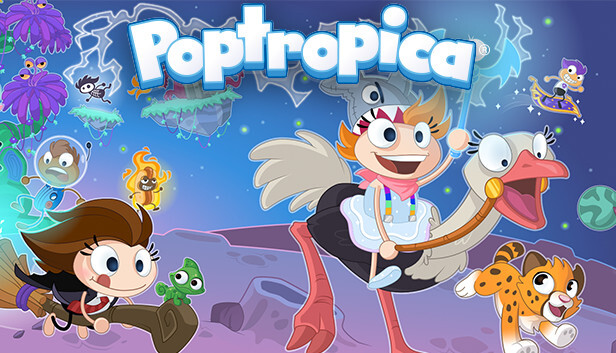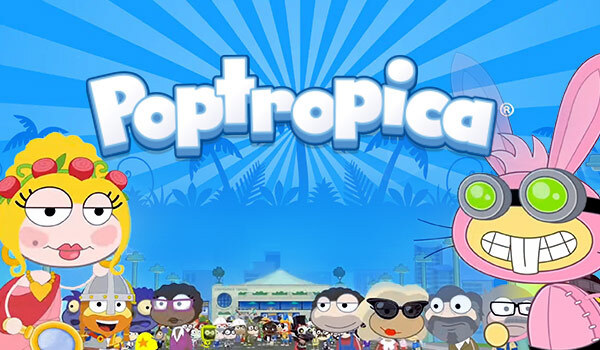Poptropica: A Journey Through the Virtual World of Adventure an
About
Introduction
In the ever-evolving landscape of online gaming, few titles have managed to capture the hearts of young audiences quite like Poptropica. Launched in 2007 by Jeff Kinney, the famous author of Diary of a Wimpy Kid, Poptropica became a safe, fun, and educational online multiplayer game designed primarily for children. Over the years, it has grown into a cultural phenomenon, offering not just entertainment but also opportunities for problem-solving, creativity, and storytelling. With its unique blend of adventure, exploration, and puzzle-solving, Poptropica has cemented itself as one of the most iconic browser-based games of the 2000s and 2010s.
This article will explore the origins of Poptropica, its gameplay, the role it played in children’s digital entertainment, and its enduring legacy.
The Origins of Poptropica
Poptropica was developed by Pearson Education’s Family Education Network, with Jeff Kinney playing a leading role in its design. The goal was to create an online world where children could explore islands filled with stories, mysteries, and challenges. Unlike many other games at the time that focused on competition, violence, or high scores, Poptropica stood out for its emphasis on narrative-driven adventures.
Each “island” in Poptropica served as a self-contained story with its own theme, plot, and puzzles. For instance, players could journey through Shark Tooth Island to solve a shark problem, or navigate the futuristic Astro-Knights Island in search of a lost princess. This approach allowed players to immerse themselves in bite-sized adventures, encouraging curiosity and critical thinking.
Gameplay Mechanics
At its core, Poptropica is a 2D platformer combined with point-and-click adventure elements. Players create a customizable character—known as a Poptropican—and set off on adventures across various islands.
Key Features of Gameplay:
Exploration – Players travel from island to island, each offering a unique storyline and set of environments to explore.
Puzzle-Solving – Islands are filled with clues, riddles, and tasks that require logical thinking and problem-solving skills.
Mini-Games – While storylines are the main attraction, mini-games such as racing, ball games, or trivia challenges provide additional entertainment.
Customizable Characters – Players can change their Poptropican’s appearance with costumes, items, and accessories.
Safe Social Interaction – Poptropica introduced multiplayer areas where kids could interact using pre-set chat phrases, ensuring a safe environment.
The gameplay design ensured that children could learn and practice critical thinking without ever feeling pressured or overwhelmed. The balance between fun and education was key to its success.
The Educational Aspect
Unlike many online games, Poptropica subtly integrated educational themes. Many islands drew inspiration from history, mythology, science, and literature. For example:
Time Tangled Island required players to travel to different historical eras to fix broken timelines.
Mythology Island introduced players to Greek gods and legendary creatures.
Spy Island taught problem-solving and stealth mechanics.
These educational elements were cleverly woven into entertaining storylines. Children learned facts about history, culture, and science while enjoying the challenge of completing missions. Teachers and parents appreciated the game for this reason, as it combined digital playtime with learning.
Cultural Impact and Popularity
During the late 2000s and early 2010s, Poptropica was at its peak. Millions of children worldwide created accounts and explored islands daily. For many, it became a shared cultural experience, much like Club Penguin or Neopets.
Several factors contributed to its popularity:
Accessibility – Being a free, browser-based game meant anyone with internet access could play.
Storytelling – Each island had a unique, captivating narrative that felt like playing through an interactive cartoon.
Community – Children shared tips, walkthroughs, and experiences online, forming a community around the game.
Celebrity Collaborations – Occasionally, Poptropica partnered with book series or cultural events, further boosting its visibility.
The game was so successful that it even expanded beyond the virtual world. Poptropica spawned books, comic strips, and merchandise, ensuring its place in children’s media.
The Evolution of Poptropica
As technology advanced, Poptropica adapted. Originally built on Adobe Flash, the game had to reinvent itself after Flash was discontinued in 2020. The developers migrated the game to HTML5, allowing it to continue functioning on modern browsers.
Poptropica also expanded into mobile apps, offering a new way for players to experience the islands on tablets and smartphones. However, some older players felt nostalgic for the original Flash version, leading to mixed reactions about the new updates.
Despite these challenges, Poptropica managed to maintain a dedicated fan base. Its ability to evolve while keeping its core essence intact speaks to its strong foundation as a storytelling-driven game.
Why Poptropica Stands Out
Many online games targeted at children came and went, but Poptropica’s unique formula gave it lasting appeal. Here are some reasons why it remains memorable:
Safe Environment – Parents trusted Poptropica as it provided controlled, safe interaction for children.
Replay Value – With dozens of islands, players always had new adventures to discover.
Engaging Storylines – Each island was like a new chapter in an endless book of adventures.
Creativity and Imagination – The whimsical art style and inventive plots sparked children’s creativity.
Poptropica and Childhood Nostalgia
For many who grew up in the late 2000s and early 2010s, Poptropica holds a special place in their childhood memories. It was often one of the first online games they played, introducing them to digital problem-solving and safe online communities.
Today, countless adults look back fondly on their time exploring Poptropica’s islands. Some even revisit the game to relive that sense of wonder and nostalgia. The rise of online nostalgia communities, YouTube playthroughs, and social media discussions around Poptropica demonstrates its lasting cultural footprint.
The Future of Poptropica
While Poptropica is no longer at the peak of its popularity, it still exists and continues to attract new generations of players. Its survival beyond the Flash era is a testament to the dedication of its developers and fans.
The future may hold even more possibilities for Poptropica:
Modern Graphics and Technology – With HTML5 and mobile platforms, the game could expand into richer, more interactive experiences.
Educational Integration – As digital learning grows, Poptropica could re-emerge as a powerful educational tool.
Virtual Reality or Augmented Reality – Immersive technologies might one day bring the islands to life in entirely new ways.
The enduring charm of Poptropica ensures that it will remain relevant, even as the gaming world changes.
Conclusion
Poptropica is more than just an online game—it is a virtual universe of imagination, storytelling, and adventure that has shaped the childhoods of millions. With its safe environment, educational undertones, and creative design, it stood out from the countless online games of its era. While trends in online gaming continue to shift, Poptropica’s legacy as a pioneer in children’s digital entertainment is undeniable.
For those who grew up navigating the islands, it represents not just a game but a cherished memory of simpler times. And for new players, it remains a portal to adventure, creativity, and fun. In a world full of fleeting online fads, Poptropica proves that meaningful storytelling and engaging gameplay will always stand the test of time.






